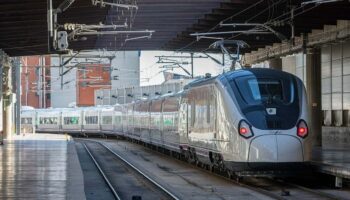China: Zhao Hongwei, the chief engineer at the China Academy of Railway Sciences, told in her interview with China.com.cn about the major tasks to solve when creating CR450, a train with the world’s highest operating speed of 400 km/h. The new EMU will be the last in CRRC’s Fuxing series. One of its latest models was developed for the Beijing Winter Olympics. Today Fuxing vehicles run at a maximum speed of 350 km/h.
National operator China Railway released preliminary specifications for CR450 last January. The project is a part of China’s 14th five-year plan for national economic and social development in 2021–2025. According to Zhao, by the end of 2022, technical specifications for 13 train subsystems were drawn up and several preliminary experiments were carried out. On the basis of the specifications, engineers develop the design documentation and are expected to complete the job next year.
When developing CR450, there are many challenges to overcome, Zhao says. As the new rolling stock should consume less energy compared to CR400 Fuxing, air resistance must be reduced while the energy efficiency of the traction system improved. To shorten the braking distance, new technologies are applied. At last, the new train is expected to generate a noise level of only 68 dB at 400 km/h, and advanced sound-absorbing and sound-insulating materials will help with that.
Operation of trains at 400 km/h instead of the previous upper limit of 350 km/h requires the adoption of new standards. According to Zhao, a family of standards needs update and extension: “We should build a more comprehensive system of standards for both high-speed trains and infrastructure such as tracks, communications, signalling controls and track monitoring systems”. Amid today’s developments, one can refer to the events of 2011 when two high-speed trains collided near Wenzhou. That led to a reduction of the maximum permitted speed in China’s railway networks from 350 to 300 km/h. The speed limit was returned to 350 km/h later, in September 2017, then the first Fuxing trains started operation on a line between Beijing and Shanghai.
To test technologies for the prospective CR450 high-speed EMU, a new CR400BF-J train is used since last April. Nine state-of-the-art technologies are developed in China and include an eddy current brake, carbon ceramic brake disc, permanent magnet traction system, and pantograph active control. The train of four powered and four non-powered cars is stated to have taken more than 60 tests. These allow assessing performance of its components on the run and aerodynamic and noise properties at high speed in the open and in a tunnel. On 21 April 2022 on the Zhengzhou – Jinan high-speed line, two CR400BF-J trains run towards each other at 453 km/h with a world record closing speed of 870 km/h.
Now Chinese media report the first CR450 vehicle is already assembled, and its cars have been painted.
















